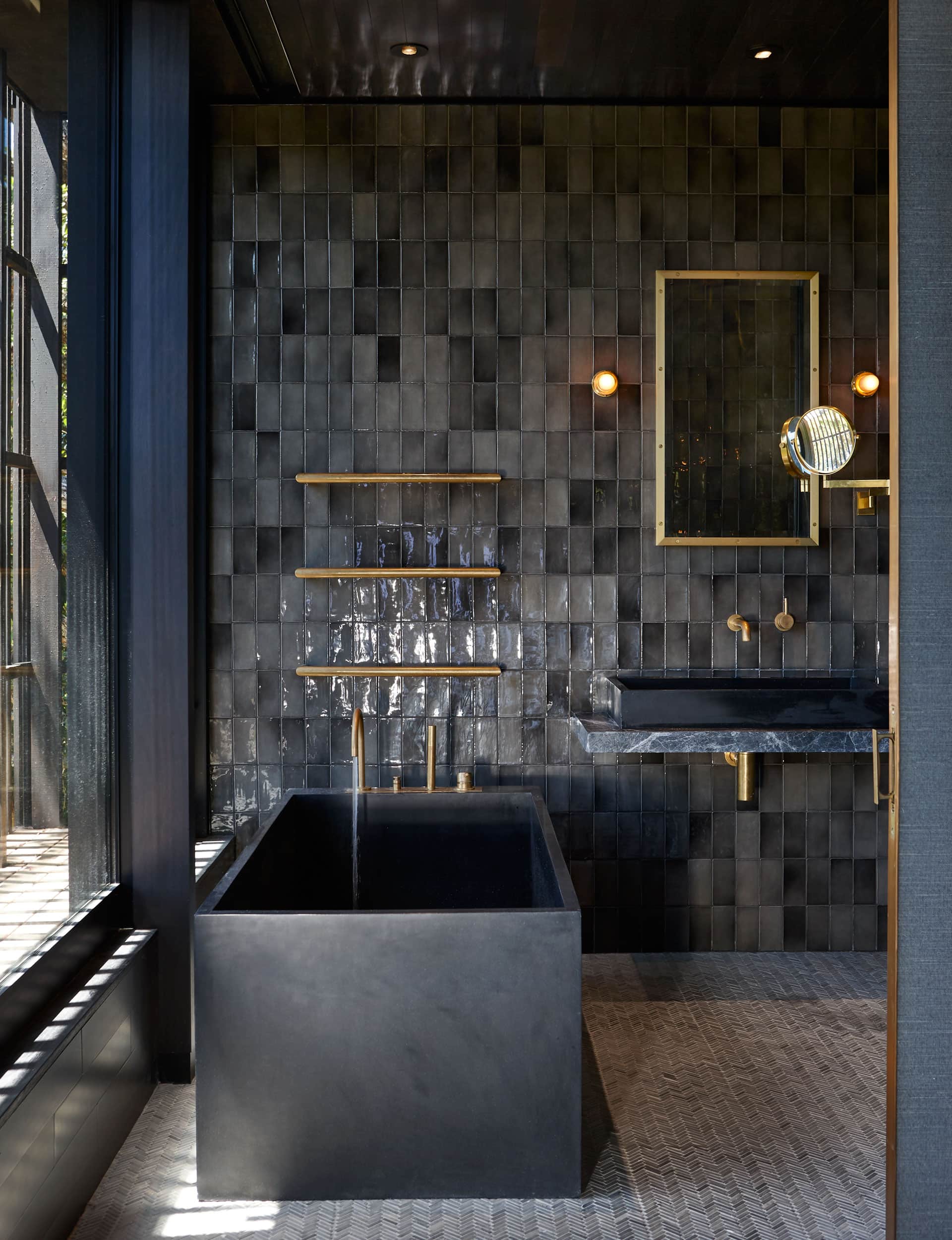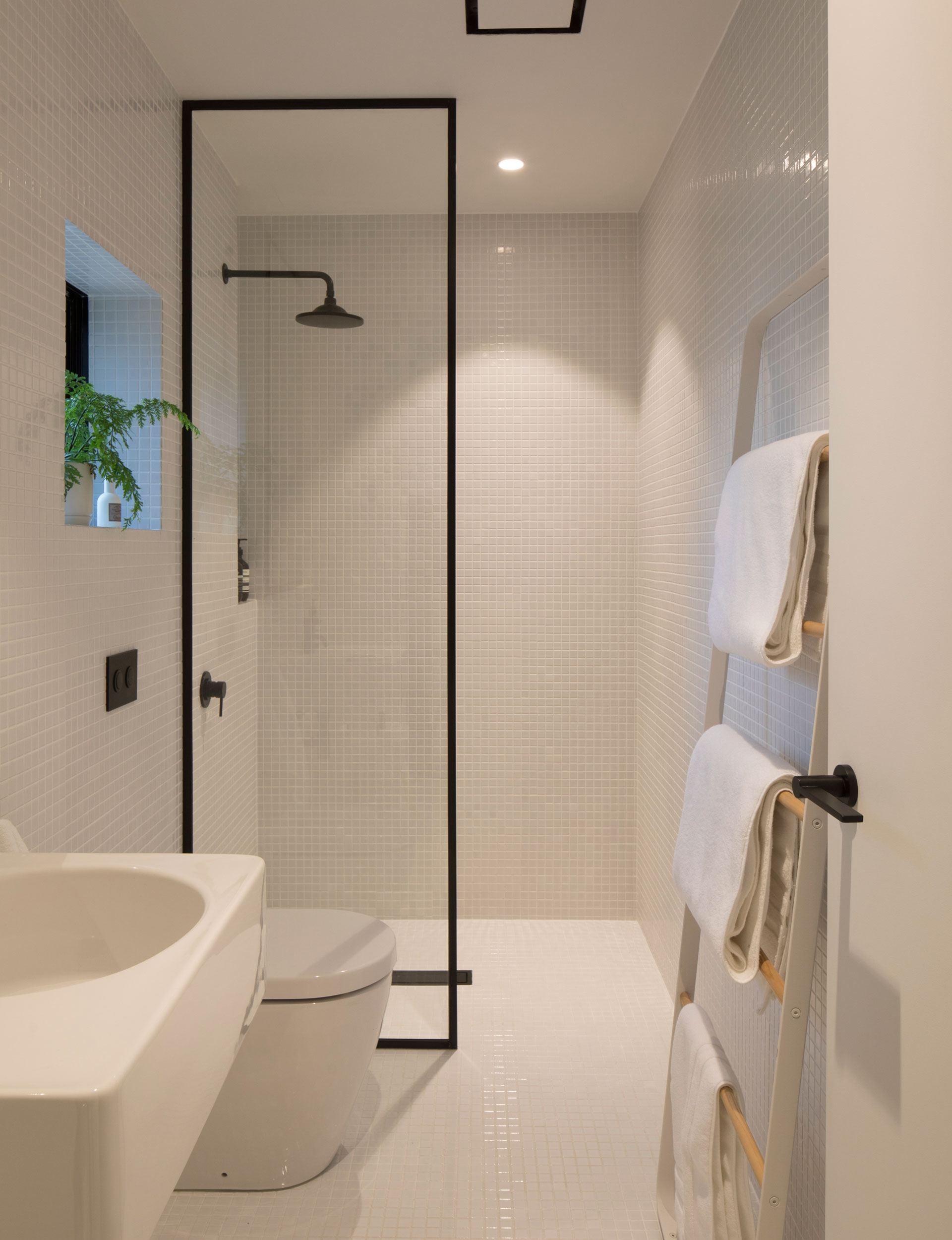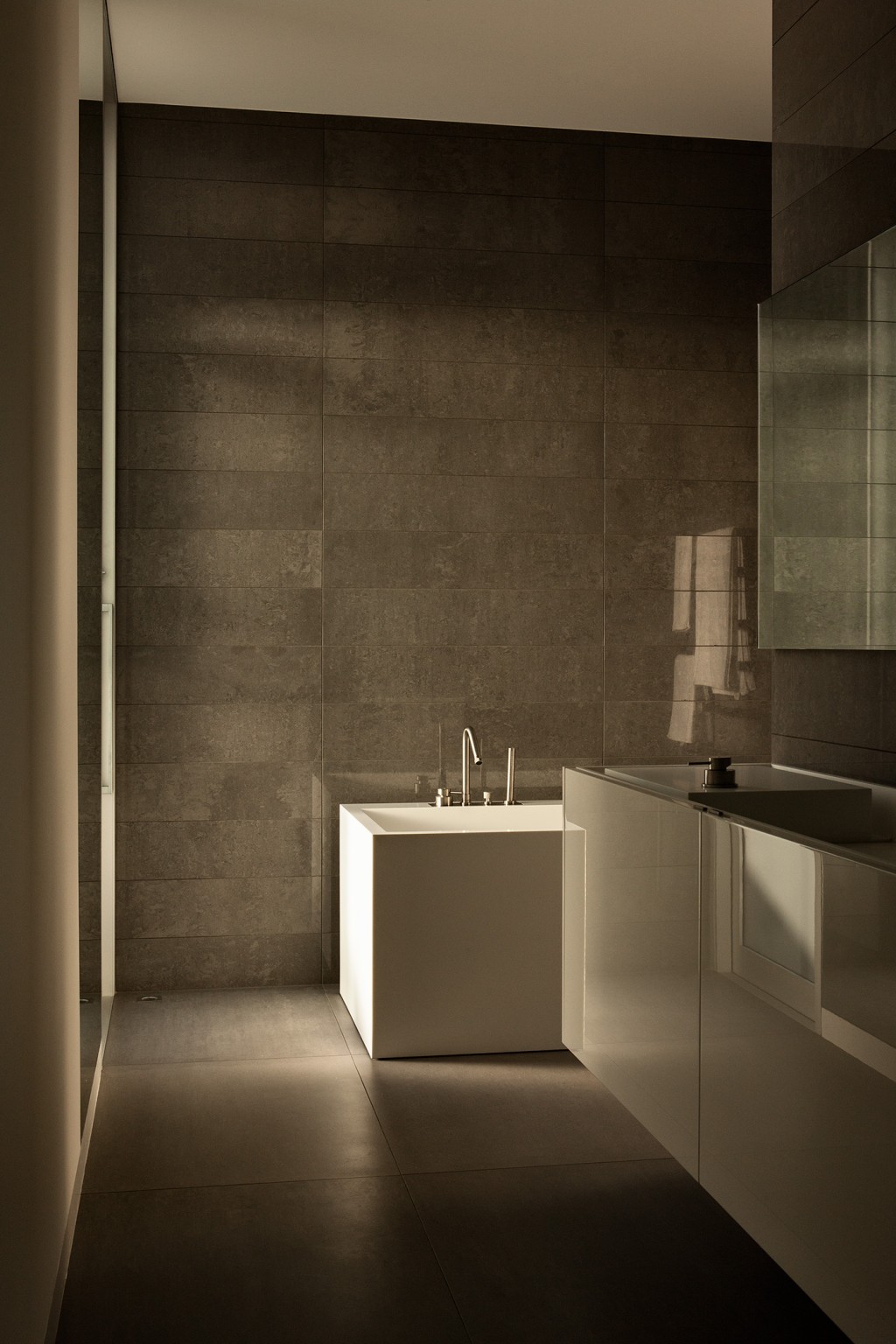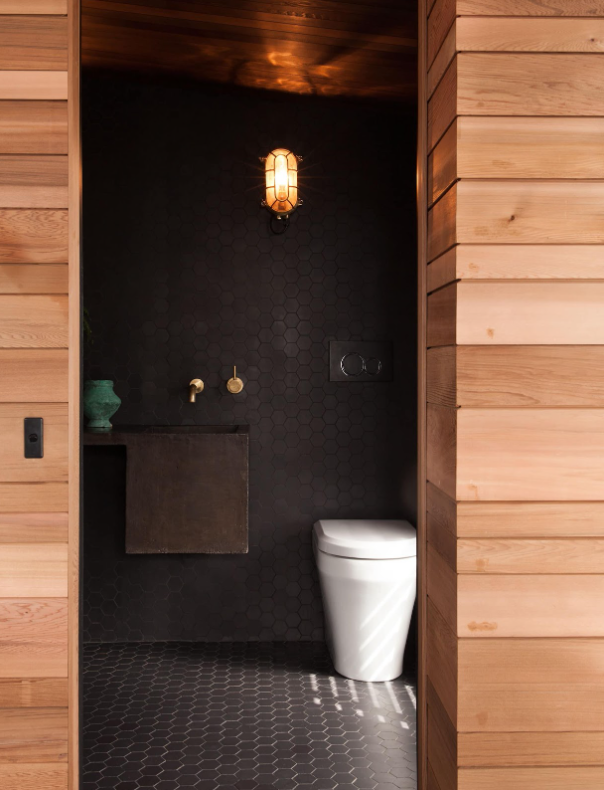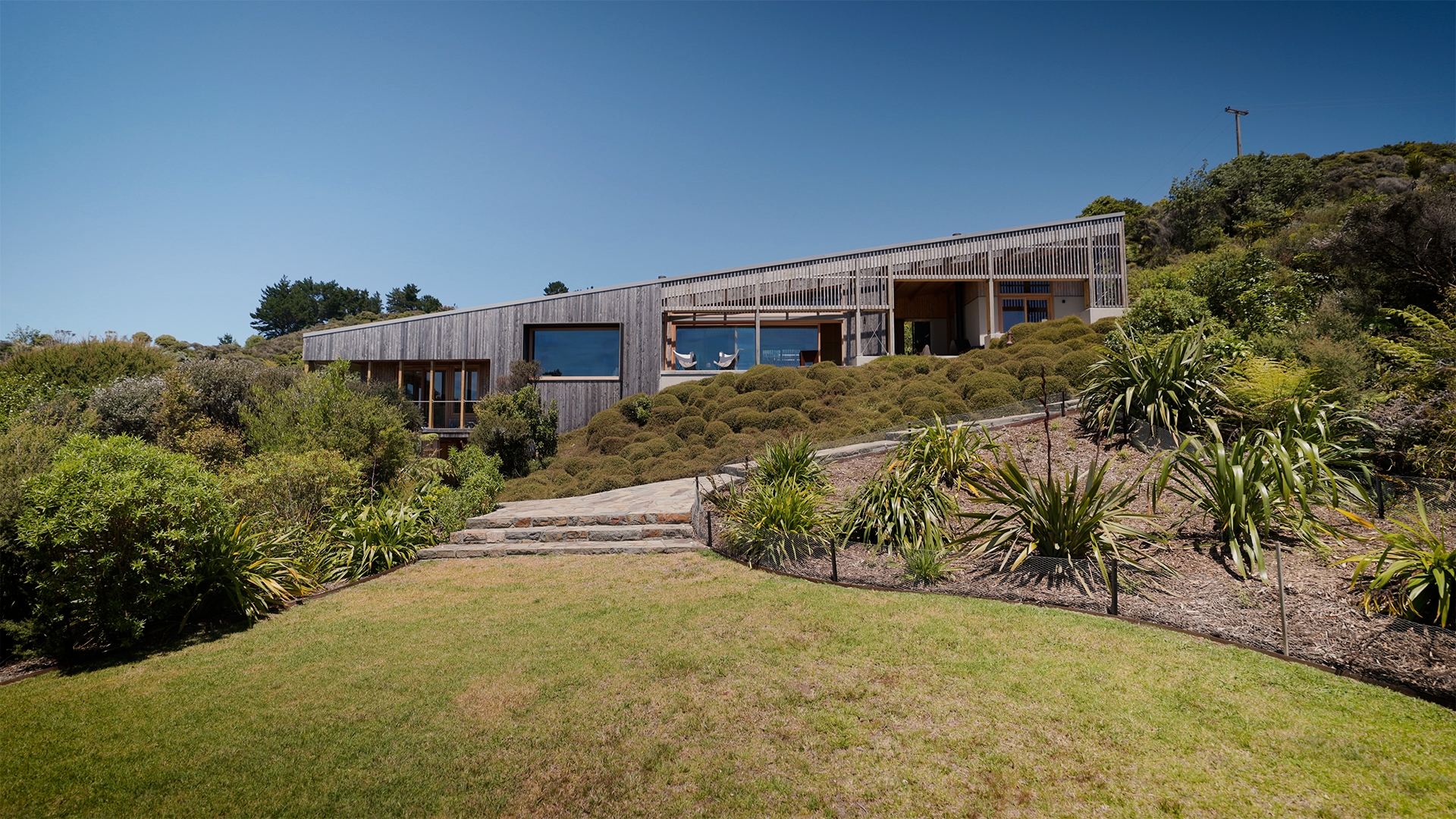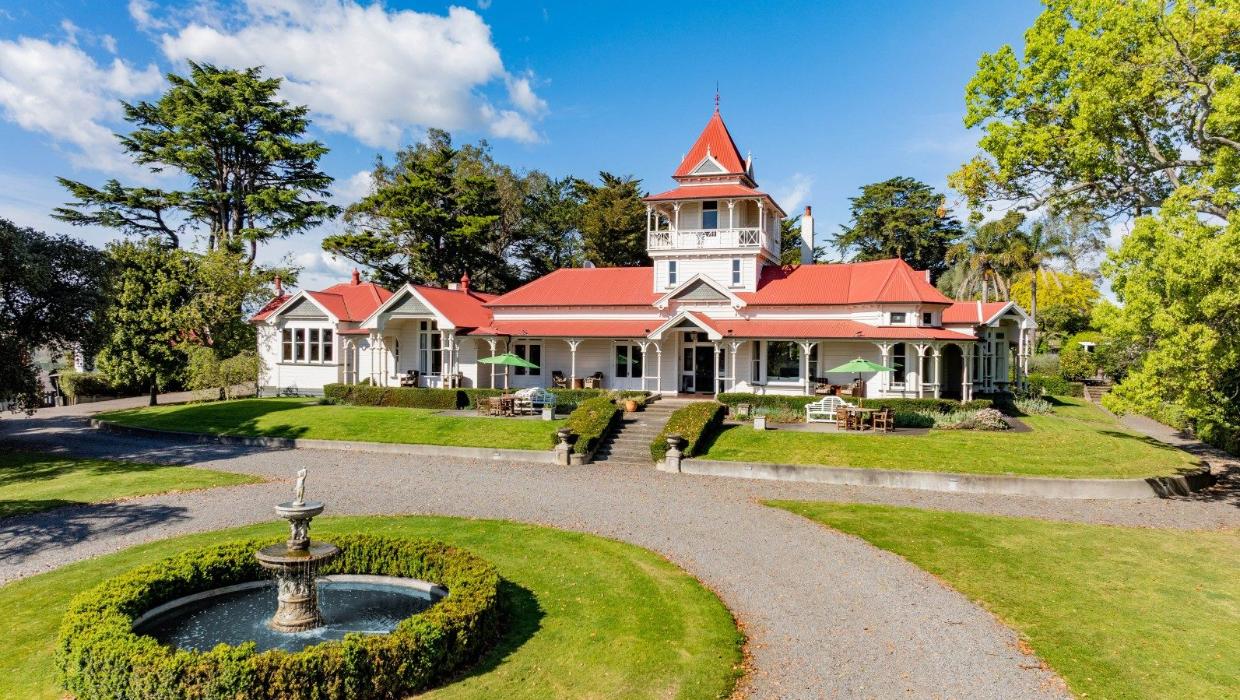Feature article
Using colour in your bathroom
Transform your bathroom with colour and texture! Explore designs like natural materials, minimalism, and bold accents.
24 September 2024

When we think bathroom design schemes most of us will picture the default white bathroom with white bathroomware… with maybe some colourful towels for visual interest. And there’s a reason why it is the default — white denotes cleanliness and a sterile environment, which is exactly what you want from a bathroom.
However, you don’t need to be pigeon-holed into accepting the “bog” standard (pun intended) bathroom if you’re building or renovating. Your bathroom is essentially a blank canvas and presents a perfect opportunity to experiment with colour. Luckily, there are few rules when it comes to creating a bathroom that embodies your personal style.
That said, before you go nuts with the paint roller, there are a couple of considerations to take on board. Dark colours will swallow the light and may end up closing in a smaller bathroom, while neutrals — especially if you’re using gloss or enamel paints — can result in overly reflective surfaces that produce unwanted glare, which can have the negative effect of washing out skin tones.
A mix of natural timber coupled with shades of grey, blue or green will lend a contemporary air, especially when incorporated through the use of handmade, multi-toned tiles, which will also impart a nice, textural feel as well. Likewise, long-established colour combinations, such as yellow and black, can add an unexpected wow factor to a period bathroom or to a powder room, where a bold colour scheme can be embraced.
A tried and tested failsafe to consider is the three-colour rule, which uses a ratio of 6:3:1. Essentially, 60 per cent of your room should be a primary colour, 30 per cent a secondary colour or texture and 10 per cent should be an accent colour.
Here are a few ideas for adding colour and texture to your bathroom.
The Natural Materials Bathroom
Since you yourself are going to be (mostly) au naturel anyway, incorporating natural and/or raw materials into your bathroom, such as in this bathroom by Strachan Group Architects, is a no-brainer.
Natural timber teams really well with raw concrete to create both visual and tactile texture, while the introduction of the sleek yet organic basin is a nice, contemporary counterpoint.
If you’re wanting to ‘go natural’ in your own bathroom, consider incorporating matte-finish tiles in either blue or green to further reinforce the nature theme, especially if you’re lucky enough to have an expansive view.
The Tone-On-Tone Bathroom
Choosing to go monotone in your bathroom can seem like a bit of a risk, but as they say, ‘big risk, big reward’. If you follow the 6:3:1 rule and break up the colour scheme with different textures and accents, the result can be striking — as seen in this bathroom by Herbst Architects.
The mix of matte and gloss finishes helps to impart a sense of dynamism to the overall scheme thanks to the play of light across the various surfaces, while the brass accents elevate the whole design and lend a luxe feel .
To achieve this look, start with your primary colour and then mix-and-match other finishes in half-strength tones on either side of the primary colour.
The Minimalist Bathroom
If your goal is to create a sense of space within a small bathroom, particularly if it’s an interior bathroom in an apartment or a bathroom with only a small window, then embracing a minimalist mindset will pay dividends.
Paring back your palette is going to bring the most success, as witnessed by this minimalist bathroom by CoLab Architecture.
Reflective surfaces and an all-white colour scheme helps to create a light and airy feel, while the slimline glass shower screen, frame in black and teamed with black fittings, helps keep everything open. Placing all the fixtures on one side maximises the floor plan and makes the bathroom seem larger than it is. The introduction of the fern also provides colour and a nod to the outdoors partially glimpsed through the window.
The Moody Bathroom
It’s no secret that we Kiwis like dark colours, so it’s not surprising that we feel an affinity with dark and moody schemes, such as this dichromatic bathroom by Pattersons.
Again, the tonal juxtaposition is used to good effect in creating a characterful bathroom design. Sharp, bold lines create crisp angles that also enhance the play of light and shadow, while the subtle gradients in the wall tiles add a sense of movement that encourages the eye to move around the room.
The Textural Bathroom
If a colourful scheme, in the traditional sense, is not something you want to create, yet you still want a bathroom sufficiently different to those of your friends, then play with material types and sizes — this is the hallmark of the textural bathroom, like this example by Studio 106.
Start with tiles, as these come in a dazzlingly wide array of sizes from penny mosaics all the way through to extra-large formats. Teaming dark tiles with a dark grout, such as in the picture, creates a subtle texture that you can then play up with a mix of materials such as timber and metallics.
The Pop of Colour Bathroom
If you’re a more ‘gently, gently’ person when it comes to using colour in your home, then the Doric Colour Pedestal by Meek Bathware is a great way of introducing a touch of bold colour into your bathroom without overwhelming the overall scheme.
Using individual pieces to bring in colour allows you to choose a colourway that you may not necessarily get away with on a larger scale, such as acid yellow or bright orange.
Whichever way you wish to proceed, there is a scheme designed to bring colour and texture into your home — even if it is in the smallest room.
Author
Discover More
Search
Other articles you might like
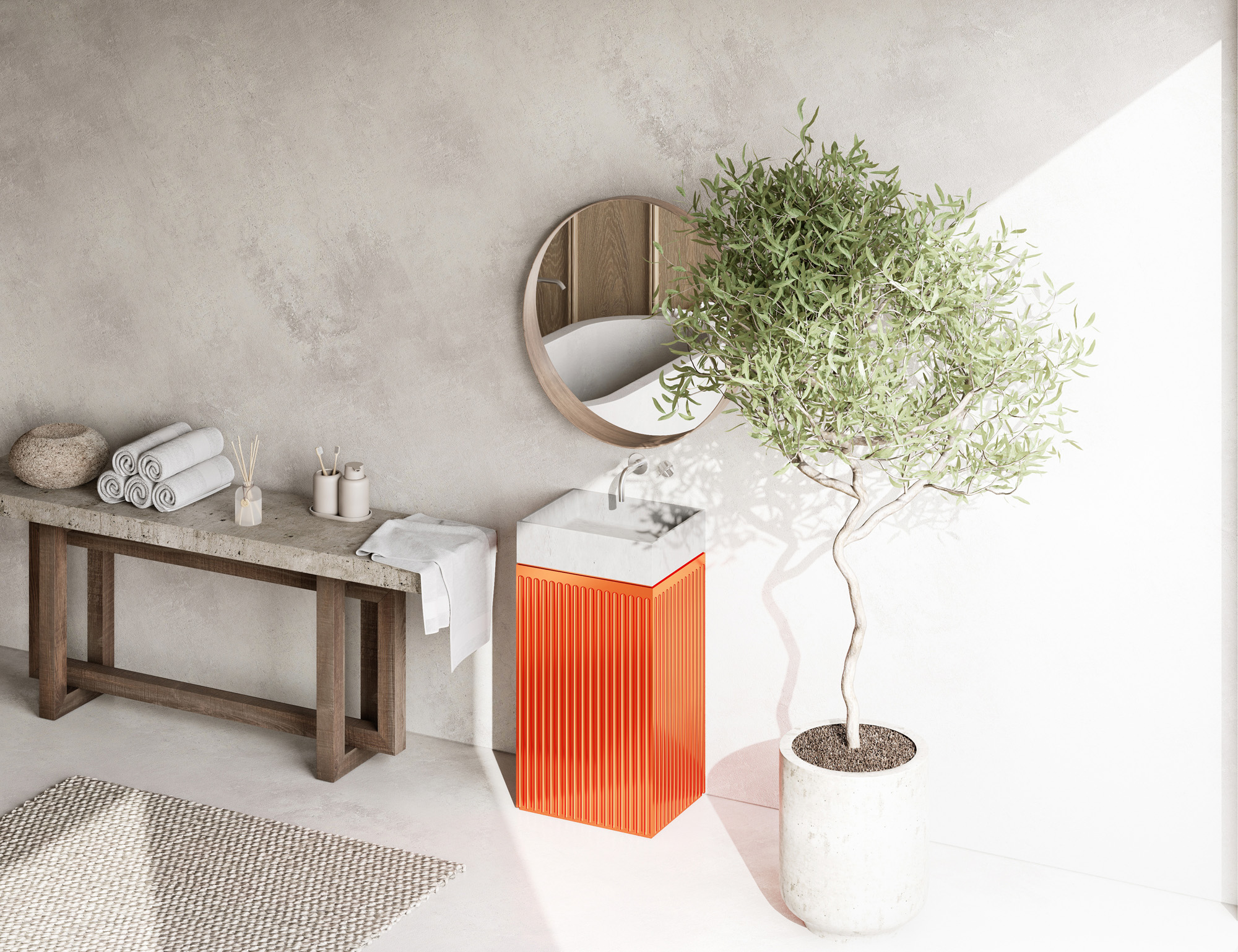
.jpg)
